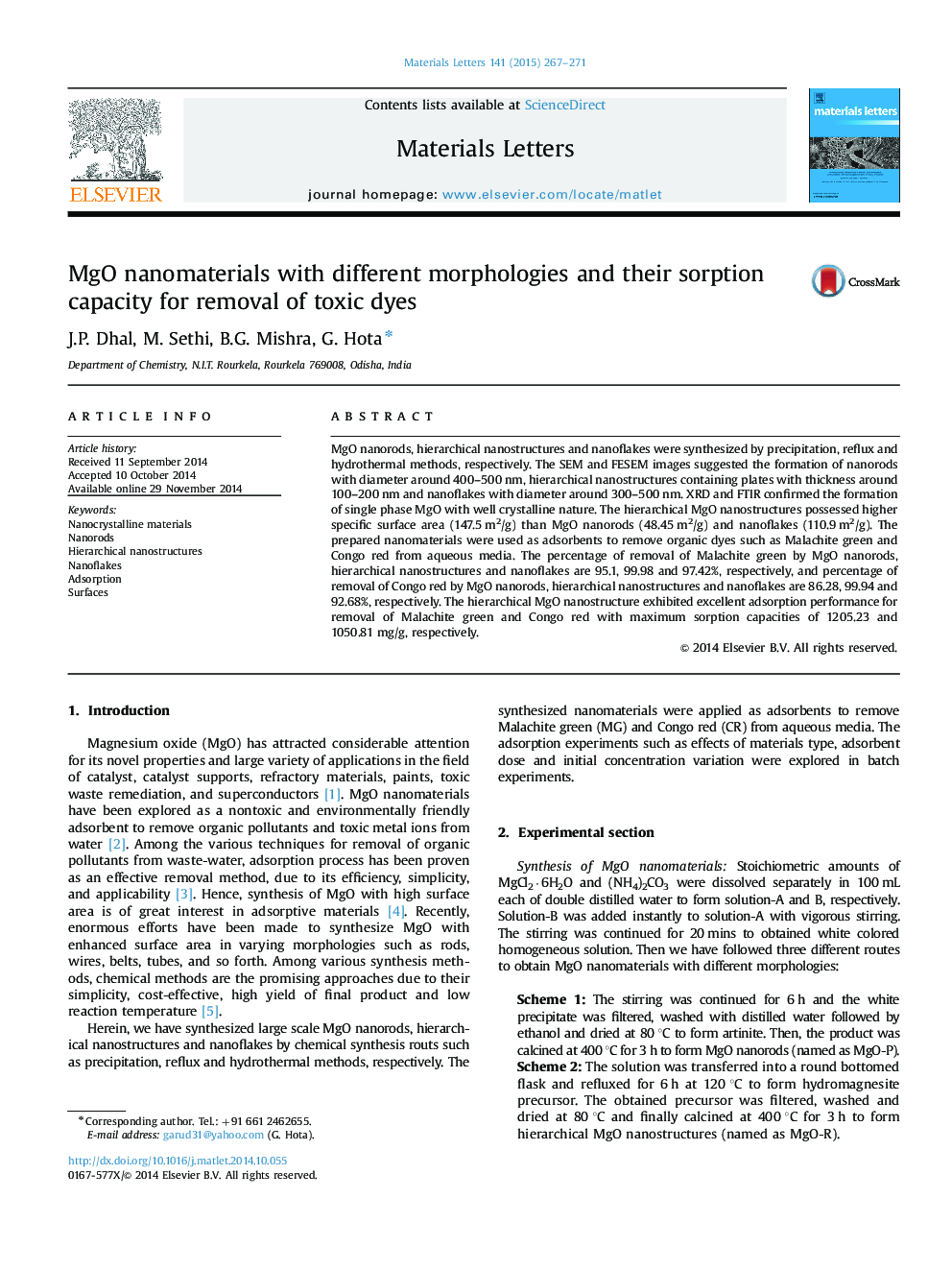| Article ID | Journal | Published Year | Pages | File Type |
|---|---|---|---|---|
| 1643175 | Materials Letters | 2015 | 5 Pages |
•MgO nanorods, hierarchical nanostructures and nanoflakes were prepared.•Hierarchical MgO nanostructures possessed high specific surface area (147.5 m2/g).•The hierarchical MgO nanostructures were regarded as superb adsorbents.
MgO nanorods, hierarchical nanostructures and nanoflakes were synthesized by precipitation, reflux and hydrothermal methods, respectively. The SEM and FESEM images suggested the formation of nanorods with diameter around 400–500 nm, hierarchical nanostructures containing plates with thickness around 100–200 nm and nanoflakes with diameter around 300–500 nm. XRD and FTIR confirmed the formation of single phase MgO with well crystalline nature. The hierarchical MgO nanostructures possessed higher specific surface area (147.5 m2/g) than MgO nanorods (48.45 m2/g) and nanoflakes (110.9 m2/g). The prepared nanomaterials were used as adsorbents to remove organic dyes such as Malachite green and Congo red from aqueous media. The percentage of removal of Malachite green by MgO nanorods, hierarchical nanostructures and nanoflakes are 95.1, 99.98 and 97.42%, respectively, and percentage of removal of Congo red by MgO nanorods, hierarchical nanostructures and nanoflakes are 86.28, 99.94 and 92.68%, respectively. The hierarchical MgO nanostructure exhibited excellent adsorption performance for removal of Malachite green and Congo red with maximum sorption capacities of 1205.23 and 1050.81 mg/g, respectively.
